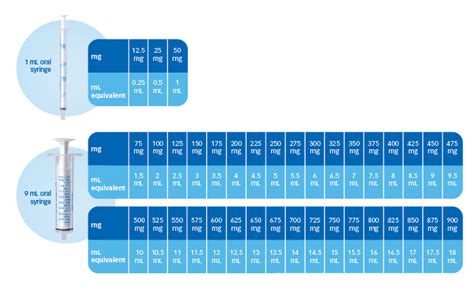How Much Is 10 Ml In Mg
Arias News
Mar 17, 2025 · 4 min read

Table of Contents
How Much is 10 ml in mg? Understanding Volume and Mass
The question "How much is 10 ml in mg?" is a common one, but it doesn't have a simple, single answer. This is because milliliters (ml) measure volume, while milligrams (mg) measure mass (or weight). To convert between the two, you need to know the density of the substance you're measuring. Density is the mass per unit volume, usually expressed as grams per milliliter (g/ml) or kilograms per liter (kg/l).
This article will delve into the complexities of this conversion, explore the concept of density, provide examples for various common substances, and offer practical tips for making these conversions accurately.
Understanding the Difference Between Volume and Mass
Before we can even begin to attempt a conversion, it's crucial to understand the fundamental difference between volume and mass:
-
Volume: This refers to the amount of three-dimensional space a substance occupies. Think of it as how much space something takes up. Milliliters (ml) are a common unit of volume, often used for liquids.
-
Mass: This refers to the amount of matter in a substance. Think of it as how much "stuff" is in something. Milligrams (mg) are a common unit of mass. Weight is often used interchangeably with mass, although technically weight is the force of gravity acting on a mass.
The key takeaway here is that a larger volume doesn't automatically mean a larger mass. A liter of feathers will have a much smaller mass than a liter of lead, even though both occupy the same volume.
Density: The Key to Conversion
The link between volume and mass is density. Density is a physical property of a substance that tells us how much mass is packed into a given volume. The formula for density is:
Density = Mass / Volume
This can be rearranged to solve for mass:
Mass = Density x Volume
And for volume:
Volume = Mass / Density
To convert 10 ml to mg, we need to know the density of the substance in question. The density is usually given in g/ml or kg/l. Since we want the answer in mg, we'll use g/ml and then convert grams to milligrams. Remember that 1 gram (g) equals 1000 milligrams (mg).
Examples of Density and Conversion
Let's illustrate this with several common examples:
1. Water
The density of water at 4°C (39°F) is approximately 1 g/ml. This means 1 ml of water has a mass of 1 gram.
Therefore, 10 ml of water would have a mass of:
Mass = Density x Volume = 1 g/ml x 10 ml = 10 g
Converting grams to milligrams:
10 g x 1000 mg/g = 10000 mg
So, 10 ml of water is approximately 10000 mg.
2. Mercury
Mercury is a much denser liquid than water. Its density is approximately 13.6 g/ml.
For 10 ml of mercury:
Mass = Density x Volume = 13.6 g/ml x 10 ml = 136 g
Converting to milligrams:
136 g x 1000 mg/g = 136000 mg
So, 10 ml of mercury is approximately 136000 mg.
3. Ethanol (Ethyl Alcohol)
The density of ethanol is approximately 0.789 g/ml.
For 10 ml of ethanol:
Mass = Density x Volume = 0.789 g/ml x 10 ml = 7.89 g
Converting to milligrams:
7.89 g x 1000 mg/g = 7890 mg
So, 10 ml of ethanol is approximately 7890 mg.
4. Olive Oil
Olive oil has a density of approximately 0.91 g/ml.
For 10 ml of olive oil:
Mass = Density x Volume = 0.91 g/ml x 10 ml = 9.1 g
Converting to milligrams:
9.1 g x 1000 mg/g = 9100 mg
So, 10 ml of olive oil is approximately 9100 mg.
Factors Affecting Density
It's important to note that the density of a substance can be affected by several factors, including:
- Temperature: Density typically decreases as temperature increases (with a few exceptions).
- Pressure: Increased pressure generally leads to increased density.
- Composition: Impurities or different chemical compositions will change the density.
Therefore, the density values provided above are approximations, and the actual mass of 10 ml of a substance might vary slightly depending on these factors.
Practical Applications and Importance
Knowing how to convert between volume and mass is crucial in many fields, including:
- Medicine: Calculating dosages of liquid medications.
- Chemistry: Performing accurate chemical reactions and experiments.
- Pharmacy: Preparing and dispensing medications accurately.
- Food Science: Measuring ingredients in recipes and analyzing food products.
- Engineering: Designing and building structures and systems.
Conclusion: Always Consider Density
The conversion of 10 ml to mg is impossible without knowing the density of the substance. Remember that milliliters measure volume, while milligrams measure mass. Density is the key link between the two, and understanding density is essential for accurate conversions in various scientific and practical applications. Always consult reliable sources for accurate density values, and be aware that temperature and pressure can affect density. By understanding these principles, you can confidently perform accurate conversions between volume and mass.
Latest Posts
Latest Posts
-
Words That Start With Y In Science
Mar 17, 2025
-
Prevent An Expressway Emergency By Merging Without
Mar 17, 2025
-
How Many Grams Of Sugar In A Pound
Mar 17, 2025
-
7am To 11am Is How Many Hours
Mar 17, 2025
-
If Your 35 What Year Was You Born
Mar 17, 2025
Related Post
Thank you for visiting our website which covers about How Much Is 10 Ml In Mg . We hope the information provided has been useful to you. Feel free to contact us if you have any questions or need further assistance. See you next time and don't miss to bookmark.
